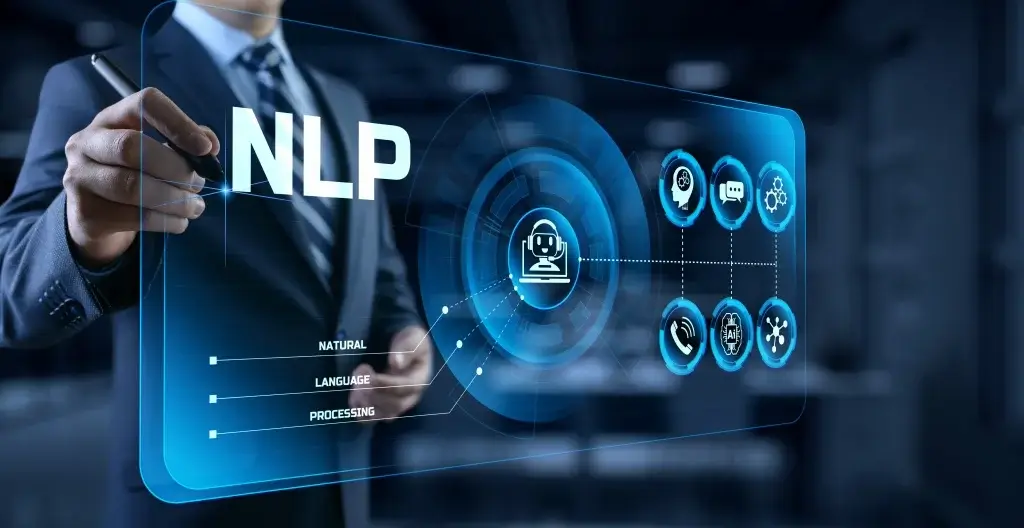Chatbots vs Conversational AI: Is There Any Difference?
Users engaged enthusiastically, with over 7400 retargeting interactions and more than 16,800 plays of the fun ‘Roll the Dice’ vacation selector game. The Chatbot’s success story includes generating over $300,000 in sales revenue within just 3 months of its launch. As mobile and conversational commerce thrive, the Luxury Escapes Travel Chatbot stands as a testament to the power of Conversational AI in driving user engagement and expanding brand authority on a global scale.
The best AI chatbots of 2024: ChatGPT and alternatives – ZDNet
The best AI chatbots of 2024: ChatGPT and alternatives.
Posted: Thu, 27 Jul 2023 07:00:00 GMT [source]
Zendesk’s adaptable Agent Workspace is the modern solution to handling classic customer service issues like high ticket volume and complex queries. These bots are similar to automated phone menus where the customer has to make a series of choices to reach the answers they’re looking for. The technology is ideal for answering FAQs and addressing basic customer issues. Where the question of chatbots vs conversational AI becomes blurred is when you consider the two key types of chatbot available.
Features of bot & Conversational AI
Chatbots efficiently manage routine tasks, ensuring seamless guest interactions and freeing up staff for more personalized services. Dom is designed to understand specific keywords and commands, streamlining the ordering process and making it more convenient for customers. Additionally, users can easily inquire about special offers or delivery estimates and even track the progress of their orders through the chatbot’s conversational interface. Poncho (although now defunct) was a well-known chatbot designed to deliver personalized weather updates and forecasts to users.
YouTube Tests Generative AI Chatbot and Comment Summaries – Voicebot.ai
YouTube Tests Generative AI Chatbot and Comment Summaries.
Posted: Tue, 07 Nov 2023 08:00:00 GMT [source]
Conversational AI, powered by ML and advanced NLU, can process various input types, such as text, voice, images, and even user actions. Moreover, Conversational AI has the ability to continuously learn and improve from user interactions, enabling it to adapt and provide more accurate responses over time. Chatbots are computer programs that simulate human conversations to create better experiences for customers. Some operate based on predefined conversation flows, while others use artificial intelligence and natural language processing (NLP) to decipher user questions and send automated responses in real-time. Conversational artificial intelligence (AI) refers to technologies, like chatbots or virtual agents, which users can talk to. They use large volumes of data, machine learning, and natural language processing to help imitate human interactions, recognizing speech and text inputs and translating their meanings across various languages.
Are chatbots and conversational AI the same thing?
Choose one of the intents based on our pre-trained deep learning models or create your new custom intent. To do this, just copy and paste several variants of a similar customer request. True AI will be able to understand the intent and sentiment behind customer queries by training on historical data and past customer tickets and won’t require human intervention. This form of a chatbot would understand what is being asked based on the sentiment of the message and not specific keywords that trigger a response.
And in many cases, they can understand and generate natural language as well as a human. Yellow.ai revolutionizes customer support with dynamic voice AI agents that deliver immediate and precise responses to diverse queries in over 135 global languages and dialects. On the other hand, because traditional, rule-based bots lack contextual sophistication, they deflect most conversations to a human agent.
What Sets Conversational AI Technology Apart?
The more Siri answers questions, the more it understands through Natural Language Processing (NLP) and machine learning. Instead of providing robotic chatbot answers, Siri chatbot vs conversational ai answers in a human-like conversational tone, mimicking what it has learned already. Conversational AI is a tool that uses the process of machine learning to communicate.
Conversational AI aims to mimic human interactions with more flexible dialogues and understanding of linguistic nuances. The natural flow enables users to express requests conversationally rather than using rigid keyword-based input methods. To say that chatbots and conversational AI are two different concepts would be wrong because they’re very interrelated and serve similar purposes. Notably, chatbots are suitable for menu-based systems where you can direct customers to give specific responses and that, in turn, will provide pre-written answers or information fetch requests. A chatbot is a computer program that uses artificial intelligence (AI) and natural language processing (NLP) to understand and answer questions, simulating human conversation.
Operating primarily through messaging platforms, Poncho engaged in friendly conversations to provide users with location-specific weather information and alerts. A chatbot is a software application designed to mimic human conversation and assist with customer inquiries. After you’ve spent some time on a website, you might have noticed a chat or voice messaging prompt appearing on the screen – that’s a chatbot in action. The more personalization impacts AI, the greater the integration with responses.

The conversations are sometimes designed like a decision-tree workflow where users can select answers depending on their use case. Sometimes known as menu-based or basic chatbots, rule-based chatbots are typically what people mean when they talk about chatbots. They communicate using a set of predefined responses based on keywords and other language identifiers from the customer. In some cases, rule-based chatbots display a decision tree so users can select answers based on their situation.
See how Conversational AI can provide a more nuanced and effective customer service experience. From multi-intent recognition to natural language understanding, witness the future of interaction. If you don’t need anything more complex than the text equivalent of a user interface, chatbots are a simple and affordable choice. However, for companies with customer service teams that need to address complex customer complaints, conversational AI isn’t just better. In effect, it’s constantly improving and widening the gap between the two systems. Conversational AI is any technology set that users can talk or type to, then receive a response from.
As customer satisfaction grows, companies will see its impact reflected in increased customer loyalty and additional revenue from referrals. Staffing a customer service department can be quite costly, especially as you seek to answer questions outside regular office hours. Providing customer assistance via conversational interfaces can reduce business costs around salaries and training, especially for small- or medium-sized companies. Chatbots and virtual assistants can respond instantly, providing 24-hour availability to potential customers. Overall, conversational AI apps have been able to replicate human conversational experiences well, leading to higher rates of customer satisfaction. A chatbot is software that automates conversations and communicates via voice or text.
However, they lack more advanced natural language processing (NLP) abilities to deeply comprehend requests or adapt to new situations. Conversational AI is trained on large datasets that help deep learning algorithms better understand user intents. At their core, these systems are powered by natural language processing (NLP), which is the ability of a computer to understand human language.
They may not be a social media platform, but it’s never a bad idea to take notes from the biggest online retailer in the world. Today CM.com has introduced a significant release for its Conversational AI Cloud and Mobile Service Cloud. Meanwhile, our teams have been working hard to introduce conversation summaries in CM.com’s Mobile Service Cloud. They say percentages don’t matter in life, but in marketing, they are everything. The customer journey, from acquisition to retention, is filled with potential incremental drop-offs at every touchpoint.
- The impressive part is that it can engage in natural-sounding conversations with human operators, showcasing its contextual understanding and dynamic interaction skills.
- You can map out every possible conversational path and input acceptable responses to narrow down the customer’s intention.
- When most people talk about chatbots, they’re referring to rules-based chatbots.
- The users on such platforms do not have the facility to deliver voice commands or ask a query in any language other than the one registered in the system.
- The term chatbot refers to any software that can respond to human queries or commands.
A multilingual chatbot makes your business more welcoming and accessible to a wider variety of customers. Because it’s available at all hours, it can assist anybody waiting to get a question answered before completing their checkout. It means those sales come faster – and that you don’t run the risk of customers losing interest in their purchase before completing it.
Rule-based chatbots often produce static and scripted responses, lacking the natural flow of human-like conversations. Users may find the interactions predictable and less engaging due to their limited ability to adapt and learn from user feedback. In contrast, Conversational AI’s use of ML and advanced NLU enables it to mimic human-like conversation patterns and provide more fluid and natural responses. The use of Conversational AI presents a range of advantages and drawbacks when compared to rule-based chatbots. Rule-based chatbots are quicker to train and more cost-effective, relying on predefined rules and clear guidelines for predictable conversational flow and high certainty in performing specific tasks.
This is the process through which artificial intelligence understands language. Once it learns to recognize words and phrases, it can move on to natural language generation. 86% of consumers say good customer service can take them from first-time buyers to brand advocates. While excellent customer service is an essential focus of any successful brand, forward-thinking companies are forming customer-focused multidisciplinary teams to help create exceptional customer experiences. Our Conversational AI Cloud can help you create your own exchanges in our user-friendly interface.

